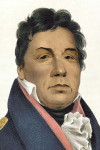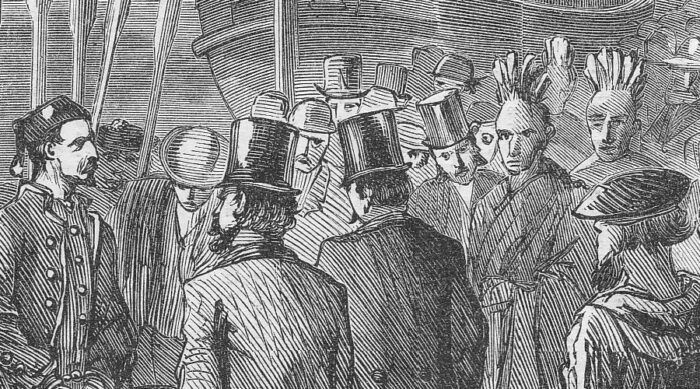
Pushmataha
As Indigenous Peoples Month draws to a close, we look at some of them who came to D.C. for various reasons since the Nactochtanks were forced out.
Washington was a frequent draw for Native American tribes seeking assistance from the federal government. For instance, members of the Teseque Pueblo arrived in the nation’s capital in 1852. They were interested in convincing the government to bring some semblance of peace to the territory that they inhabited. Along the way, they were taken to the Navy Yard, where they watched some of the country’s most modern weaponry batter an old and outdated ship that was anchored in the Anacostia. The visitors went home, suitably impressed.
They were not even the only group to be in town at that time – a delegation from the Sac and Fox Nation, originally from Missouri, but who had been resettled in Kansas in 1837 – were there as well.
Another set of visitors, a delegation of Sioux, found themselves at one of the more remarkable events to occur at the Navy Yard: The arrival of John Surratt, purported Lincoln assassination conspirator. In the full-page picture printed in Harper’s Weekly shortly thereafter, two members of that tribe can be seen observing Surratt step onto U.S. soil for the first time in over a year and a half.

Others found their trip to be more fraught. For instance, Pushmataha, a Choctaw chief who had fought alongside Andrew Jackson came to Washington in 1824 to protest the loss of his tribes lands. He can be seen at the top of the article. He would die here of what was then called croup (but which was more likely diphtheria), and was buried with all military honors in Congressional Cemetery.
In 1868, Ut Sin Malikan of the Nez Perce was in D.C. on a similar mission. He, too, died here. Records differ whether he died of a fall from a window or of typhus– or both. Either way, he remained here forever, as he was buried in Congressional Cemetery as well.
In fact, there are a a whole slew of gravesites in that cemetery that are the final resting place of numerous American Indians. Their map “Walking Tour: American Indian” lists 35 of them, from Pushmataha in 1824 to Frederick D. Broken Rope in 1992.
Even today, there is a presence on or near the Hill. Just at the base of the Hill is a memorial to the Native Americans who have served in our country’s military. And close to the Capitol, there is a grand 1822-vintage house is known as the Watterston House, for its connection to George Watterston, one-time librarian of congress. Today, it houses the National Indian Gaming Association, who help tribes achieve self-sufficiency through gaming.
